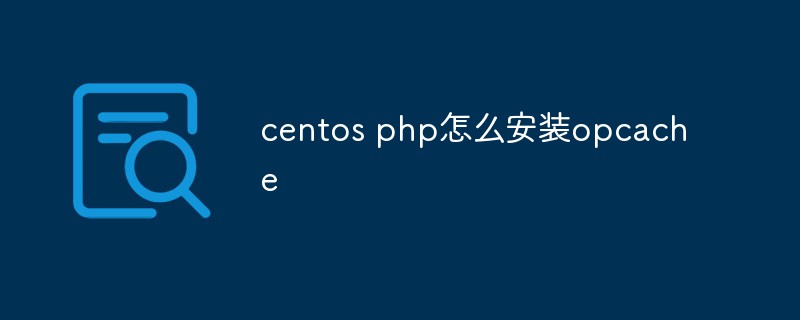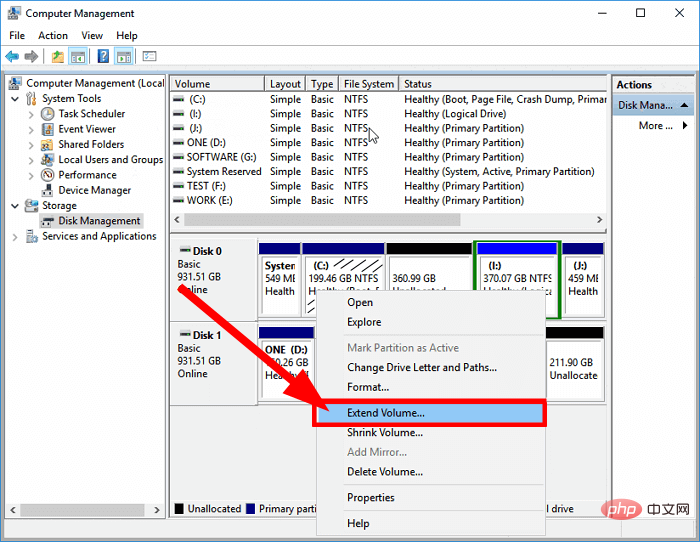
CentOS File System FAQ
In the process of using the CentOS operating system, the file system is a vital component. It is responsible for storing, organizing and managing files and directories, and plays a vital role in the stable operation of the system and data security. However, inevitably, you will encounter some common problems when using file systems. This article will answer common questions about the CentOS file system, hoping to help readers better understand and deal with these problems.
Question 1: How to check the usage of the file system?
Answer: In the CentOS system, you can use the df command to view the file system usage. This command can display information such as the total capacity of the file system, used space, free space, and file system mount points. For example, you can execute the following command to view the usage of each file system in the current system:
df -h
This way you can clearly understand the usage of each file system, so that you can manage and optimize space in a timely manner.
Question 2: How to expand the capacity of the file system?
Answer: If the capacity of a file system is insufficient and its capacity needs to be expanded, this can be achieved by expanding physical disks, partitions, logical volumes, etc. The specific operations are as follows:
- Expand the physical disk: First, you need to expand the capacity of the physical disk on the virtualization management platform or hardware, and then partition the disk through commands such as fdisk or parted.
- Extend partition: Use the fdisk or parted command to adjust the target partition and expand its capacity.
- Extend logical volume: If you use Logical Volume Manager (LVM), you can extend the capacity of the logical volume through the lvextend command.
- Expand the file system: Finally, use the resize2fs command to expand the size of the file system so that it can take advantage of the new space.
It should be noted that before expanding the file system capacity, data backup must be done to prevent data loss due to accidents.
Question 3: How to fix file system errors?
Answer: Various errors may occur in the file system, such as data block corruption, log errors, inode errors, etc. When you encounter a file system error, you can fix it by the following methods:
- Check the file system: Use the fsck command to check the file system and fix any errors. You can use the fsck command at system startup, operate in single-user mode, or boot the system from a Live CD for repair.
- Use backup: If a serious error occurs in the file system and cannot be repaired, you can try to restore the backup data.
- Hardware detection: Sometimes file system errors are caused by hardware failures, and the problem can be solved by detecting the status of the hardware device.
Question 4: How to optimize file system performance?
Answer: In order to improve the performance of the file system, the following measures can be taken:
- Choose the appropriate file system: According to the specific needs, select the appropriate file system type, such as ext4, XFS wait.
- Reasonable partitioning: Store data for different purposes in different partitions to avoid affecting file system performance.
- Enable disk cache: Improve disk performance by adjusting the disk I/O scheduling algorithm and enabling read and write cache.
- Regularly clean up unnecessary files: Regularly clean up unnecessary temporary files, log files, etc. to free up disk space.
Through the above optimization measures, the performance of the file system can be effectively improved and the operating efficiency of the system can be improved.
Summary:
In the CentOS system, the file system is the core component of data storage and management, and you may encounter various problems during use. Through the answers in this article, readers can better understand and deal with common problems in the file system, and improve system stability and data security. At the same time, it is recommended to find solutions in time and back up important data when encountering problems to avoid unnecessary losses. I hope this article is helpful to readers, thank you for reading!
The above is the detailed content of CentOS File System FAQ. For more information, please follow other related articles on the PHP Chinese website!
 centos用什么命令可查版本号Mar 03, 2022 pm 06:10 PM
centos用什么命令可查版本号Mar 03, 2022 pm 06:10 PM查版本号的命令:1、“cat /etc/issue”或“cat /etc/redhat-release”,可输出centos版本号;2、“cat /proc/version”、“uname -a”或“uname -r”,可输出内核版本号。
 centos重启网卡的方法是什么Feb 22, 2023 pm 04:00 PM
centos重启网卡的方法是什么Feb 22, 2023 pm 04:00 PMcentos重启网卡的方法:1、对于centos6的网卡重启命令是“service network restart”;2、对于centos7的网卡重启命令是“systemctl restart network”。
 centos php怎么安装opcacheJan 19, 2023 am 09:50 AM
centos php怎么安装opcacheJan 19, 2023 am 09:50 AMcentos php安装opcache的方法:1、执行“yum list php73* | grep opcache”命令;2、通过“yum install php73-php-opcache.x86_64”安装opcache;3、使用“find / -name opcache.so”查找“opcache.so”的位置并将其移动到php的扩展目录即可。
 centos 怎么离线安装 mysqlFeb 15, 2023 am 09:56 AM
centos 怎么离线安装 mysqlFeb 15, 2023 am 09:56 AMcentos离线安装mysql的方法:1、将lib中的所有依赖上传到linux中,并用yum命令进行安装;2、解压MySQL并把文件复制到想要安装的目录;3、修改my.cnf配置文件;4、复制启动脚本到资源目录并修改启动脚本;5、将mysqld服务加入到系统服务里面;6、将mysql客户端配置到环境变量中,并使配置生效即可。
 centos 7安装不出现界面怎么办Jan 03, 2023 pm 05:33 PM
centos 7安装不出现界面怎么办Jan 03, 2023 pm 05:33 PMcentos7安装不出现界面的解决办法:1、选择“Install CentOS 7”,按“e”进入启动引导界面;2、 将“inst.stage2=hd:LABEL=CentOS\x207\x20x86_64”改为“linux dd”;3、重新进入“Install CentOS 7”,按“e”将“hd:”后的字符替换成“/dev/sdd4”,然后按“Ctrl+x”执行即可。
 centos 怎么删除 phpFeb 24, 2021 am 09:15 AM
centos 怎么删除 phpFeb 24, 2021 am 09:15 AMcentos删除php的方法:1、通过“#rpm -qa|grep php”命令查看全部php软件包;2、通过“rpm -e”命令卸载相应的依赖项;3、重新使用“php -v”命令查看版本信息即可。
 centos中ls命令不显示颜色怎么办Apr 20, 2022 pm 03:16 PM
centos中ls命令不显示颜色怎么办Apr 20, 2022 pm 03:16 PM方法:1、利用“vim ~/.bashrc”编辑用户目录(~)下的“.bashrc”文件;2、在文件内添加“alias ls="ls --color"”;3、利用“:wq!”命令保存文件内的更改;4、“exit”命令退出终端后重新连接即可。
 如何在 CentOS 9 Stream 上安装 NagiosMay 10, 2023 pm 07:58 PM
如何在 CentOS 9 Stream 上安装 NagiosMay 10, 2023 pm 07:58 PM我们的PC中有一个磁盘驱动器专门用于所有与Windows操作系统相关的安装。该驱动器通常是C驱动器。如果您还在PC的C盘上安装了最新的Windows11操作系统,那么所有系统更新(很可能是您安装的所有软件)都会将其所有文件存储在C盘中。因此,保持此驱动器没有垃圾文件并在C驱动器中拥有足够的存储空间变得非常重要,因为该驱动器拥有的空间越多,您的Windows11操作系统运行起来就越顺畅。但是您可以在磁盘驱动器上增加多少空间以及可以删除多少文件是有限制的。在这种情况下,


Hot AI Tools

Undresser.AI Undress
AI-powered app for creating realistic nude photos

AI Clothes Remover
Online AI tool for removing clothes from photos.

Undress AI Tool
Undress images for free

Clothoff.io
AI clothes remover

AI Hentai Generator
Generate AI Hentai for free.

Hot Article

Hot Tools

mPDF
mPDF is a PHP library that can generate PDF files from UTF-8 encoded HTML. The original author, Ian Back, wrote mPDF to output PDF files "on the fly" from his website and handle different languages. It is slower than original scripts like HTML2FPDF and produces larger files when using Unicode fonts, but supports CSS styles etc. and has a lot of enhancements. Supports almost all languages, including RTL (Arabic and Hebrew) and CJK (Chinese, Japanese and Korean). Supports nested block-level elements (such as P, DIV),

Dreamweaver CS6
Visual web development tools

SublimeText3 Mac version
God-level code editing software (SublimeText3)

SublimeText3 Linux new version
SublimeText3 Linux latest version

SublimeText3 English version
Recommended: Win version, supports code prompts!






